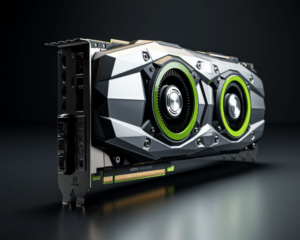Founding
OpenAI was founded in 2015 by a group of tech executives and entrepreneurs, including Elon Musk and Sam Altman, with the goal of advancing the field of AI in a way that would benefit humanity. Since its founding, OpenAI has made significant contributions to the field, developing advanced machine learning models and collaborating with other organizations to advance the state of the art in AI.
In this episode, we’re going to take a look at some of the models that OpenAI has developed in the past, starting with the oldest and working our way up to the most recent. We’ll also discuss the training methodology behind these models and how they are used in a variety of applications.
GPT and ChatGPT
One of the first models that OpenAI developed was GPT, or Generative Pre-training. GPT was a machine learning model that was trained on a large dataset of human-generated text. It used a combination of supervised and unsupervised learning to generate responses to user input, allowing it to have natural, human-like conversations.
GPT was a significant achievement for OpenAI, as it was one of the first models to demonstrate the ability to generate human-like text. However, it had some limitations, such as a lack of context awareness, that limited its capabilities. To address these limitations, OpenAI developed GPT-2, an improved version of GPT with a larger dataset and more advanced training methods.
GPT-2 was followed by GPT-3, which was even more advanced and had the ability to perform a wide range of natural language tasks, including translation, summarization, and question answering. GPT-3 was trained on a dataset of over 8 billion words and was able to generate human-like text that was often indistinguishable from text written by a human.
Later on, based on these OpenAI has also developed other advanced machine learning models, such as ChatGPT. ChatGPT is a chatbot model that is trained on a large dataset of human conversation. It uses a combination of supervised and unsupervised learning to generate responses to user input, allowing it to have natural, human-like conversations. ChatGPT has been used in a variety of applications, including customer service and virtual assistants.
How are these models trained?
Supervised Learning
To train these models, OpenAI uses a combination of supervised and unsupervised learning methods.
In machine learning, supervised learning is a type of learning in which a model is trained on a labeled dataset, where the correct output for each input is provided. The goal of supervised learning is for the model to learn how to map inputs to outputs and make predictions based on this mapping.
For example, suppose we want to build a model to predict the price of a house based on its size and location. We could train a supervised learning model on a dataset of houses that includes the size and location of each house, as well as its price. The model would learn to associate certain sizes and locations with certain prices, and we could then use the model to make predictions about the price of a house based on its size and location.
Another example of supervised learning is a spam filter for email. We could train a supervised learning model on a dataset of emails that are labeled as spam or not spam. The model would learn to identify patterns and features that are commonly associated with spam emails, and we could then use the model to classify new emails as spam or not spam based on these patterns and features.
Unsupervised Learning
Unsupervised learning involves training the model on an unlabeled dataset, where the correct output is not provided. This allows the model to learn patterns and relationships in the data, which it can then use to make predictions.
One example of unsupervised learning is clustering, in which a model is trained to group data points into clusters based on similarities between the points. For example, we could use unsupervised learning to cluster customers into groups based on their purchasing patterns. The model would learn to identify patterns in the data and group customers with similar patterns together, without being told which group each customer should belong to.
Another example of unsupervised learning is anomaly detection, in which a model is trained to identify unusual or abnormal data points. This could be used, for example, to detect fraudulent transactions in a dataset of financial transactions. The model would learn to identify patterns that are typical of normal transactions, and flag transactions that deviate from these patterns as potentially fraudulent.
Reinforcement Learning
OpenAI has also used other training methods, such as reinforcement learning, which involves training a model through trial and error in a simulated environment. This allows the model to learn to take actions that will maximize a reward, such as winning a game or solving a puzzle.
A simple example of reinforcement learning is a dog learning to sit on command. The dog is the agent and the environment is the trainer. The trainer rewards the dog when it sits, and the dog learns to associate the action of sitting with the reward. Over time, the dog learns to sit on command in order to maximize the reward.
Another example of reinforcement learning is a self-driving car learning to navigate a city. The car is the agent and the environment is the city streets. The car receives a reward for following the rules of the road and reaching its destination safely, and it learns to navigate the city by trial and error, adjusting its actions based on the rewards or penalties it receives.
Potential Usages
There are tons of potential usage of ChatGPT, one of it is the Developer Industry. There’re many software developers already using ChatGPT to debug or even write codes using ChatGPT, some Blockchain developers were even able to find potential hacking points or weaknesses in smart contracts, potentially saving millions of dollars being stolen from hackers. Some 3D artists used ChatGPT to geneare 3D models using ChatGPT, saving them hours trying code and debug. The potentials are truly infinite.
DALL-E
In addition to ChatGPT, OpenAI has also developed DALL-E, a machine learning model that is able to generate images from text descriptions. DALL-E, or Deep Learning Language-based Image Generator, was trained on a dataset of text-image pairs and is able to generate high-quality images that are based on user-provided text descriptions. For example, you could type in “Draw a painting in Picasso style”, DALL-E would generate tons of images exactly in Picasso style, you could add in more details by typing specific requirements.
DALL-E has the potential to revolutionize a number of industries, such as graphic design and advertising. With DALL-E, designers and marketers could generate custom images based on text descriptions, saving time and effort in the design process. DALL-E could also be used in other applications, such as image search and image-based recommendation systems.
Collaborations with Other Organizations
In addition to developing advanced machine learning models, OpenAI has also undertaken a number of collaborations with other organizations to advance the field of AI. For example, the company has worked with Microsoft to develop machine learning models for natural language processing and image recognition. It has also collaborated with the International Olympic Committee (IOC) to explore the use of AI in sports. One interesting example of this collaboration is the use of AI to analyze sports data and identify trends and patterns that could be used to improve performance. By working with organizations like Microsoft and the IOC, OpenAI has been able to leverage the expertise and resources of other organizations to make significant progress in the field of AI.
Investments From Venture Capitals
OpenAI is reportedly in talks to sell shares in a tender offer that would value the company at around $29 billion. Venture-capital firms Thrive Capital (which has previously invested in Instagram and Slack) and Founders Fund (Founded by Paypal founder Peter Thiel, which has invested in Airbnb, Spotify, Palantir) are reportedly in talks to buy shares in the deal, which could total at least $300 million in OpenAI share sales. The deal would roughly double OpenAI’s valuation from a prior tender offer completed in 2021, when the company was valued at around $14 billion.
Microsoft is also reportedly in talks to increase its investment in OpenAI. The company had already invested $1 billion in the company in 2019 and became its preferred partner for commercializing new technologies. They’re currently examining the chatbot’s accuracy and is planning to incorporate it into Microsoft’s own search engine Bing, which currently has 9% of the world’s search engine traffic, while Google dominates with an 83% share.
Conclusion
Looking to the future, the potential of OpenAI and its impact on the field of artificial intelligence is significant. With its focus on developing advanced machine learning models and collaborating with other organizations, OpenAI has the potential to continue making important contributions to the field. Its work has the potential to shape the future of AI and its impact on society, and it will be interesting to see what the company achieves in the coming years.
We hope you’ve enjoyed this deep dive into the work of OpenAI and the models they’ve developed. From GPT to ChatGPT and DALL-E, OpenAI has made significant contributions to the field of artificial intelligence, and we can’t wait to see what they do next.




